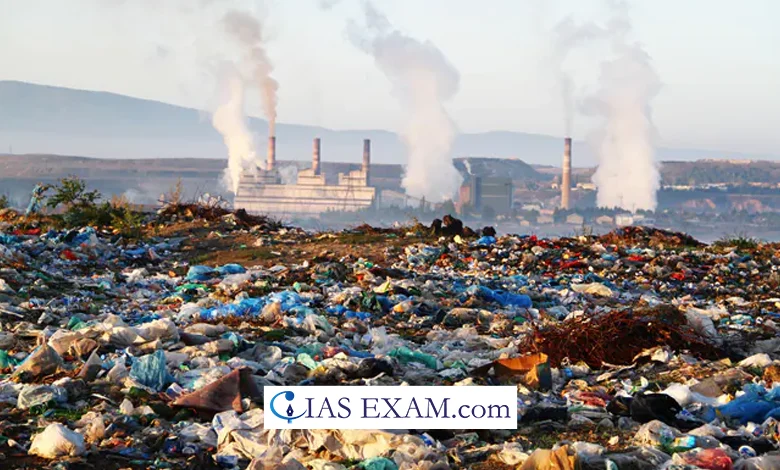Microbes as Primary Source of New Methane
Syllabus: Environment [GS Paper- 3]

Context
A recent study has found that microbes, not fossil fuels, produced most of the new methane in the atmosphere.
Methane
- Methane (CH4), a greenhouse gas which is more powerful than CO2, is a key contributor to climate change. The fraction is generated from dual agents- nature and human and different emission sources produce different isotopes.
- These isotopes can be tracked by scientists who can trace the origin of the methane emissions.
- To decrease methane emissions, the significance is to regulate human actions that produce it, for example, solid waste management and extracting of fossil fuels.
Evolving Understanding
- Methane is an atmospheric gas with a capacity globally to warm; this 28 times bigger than that of carbon dioxide during the same period.
- It happens on different focal points such as agriculture, dairy farming, and of course fossil fuel production.
- The main sources of methane release into the atmosphere are the burning of fossil fuel as energy, the agricultural activities and the processes of coping with the waste which cause 30% of the earth’s warming.
Sources of Methane
- Scientists have identified two primary sources of methane: biogenic and heat-giving.
- The thermogenic methane is the only greenhouse gas emitted as the fossil fuels such as oil and natural gas are taken out from deep beneath the Earth’s surface.
- Contrary, methane biogenic is produced by the methane-generating microbes known as archaea, also anaerobic bacteria.
- These one-celled creatures inhabit in the restrictive environments where the content is depleted in oxygen, i.e. animal digestive tracts, wetlands, rice paddies, landfills, and laggard sediments of land or ocean.
- Methanogens are an important part of the global carbon cycle, the processes of methanogenesis transforming organic into methane that is a potent greenhouse gas.
Modelling with a Supercomputer
- Carbon-13 isotope has an important role of differentiating the carbon sources of methane.
- The presence of a low proportion of carbon-13 atoms in a methane molecule generally is a sign of the biological sources while a high ratio points towards thermogenic sources like fossil fuels or geological activities of the earth.
- A research simulation using a supercomputer to denounce the atmosphere found that the blame for the largest part of atmospheric new methane is running to the microbes, not the fossil fuels.
- The study, additionally, established that methane release from fossil fuels went down from 1990 and 2000. Since then, it has been fairly stable.
Data Mismatch
- The study’s findings illustrated two emissions inventories, EDGAR and GAINS inconsistently. EPA disclosed that it had discovered that the amount of methane emissions from the oil and natural gas exploration activities had gone up in between the period 1990 and 2020.
- At the same time, it had been unusual for emissions GAINS to show such an “unusual” increase since 2006. The researchers pointed out that different factors which might be responsible for such difference could include the increased cattle farming in Latin America and increasing emissions from the waste generated in South Asia and Southeast Asia, as well as in Latin America and Africa.
- Furthermore, the number of wetlands all around the world has also increased.
Global Methane Reduction Initiative
- The US and EU led effort to reduce global methane emissions has been signed by over 90 countries at the COP26 climate conference.
- The pledge aims to cut down methane emissions by 30% from 2020 levels by 2030, with Brazil being one of the signatories.
- However, China, Russia, India, and Australia have not backed the pledge.
- Methane is a significant contributor to global warming, accounting for half of the 1.0 degree Celsius rise in temperature since the pre-industrial era.
Conclusion
A recent study has shifted our understanding of methane emissions by highlighting microbes as the primary source, rather than fossil fuels. This underscores the importance of addressing biogenic methane sources alongside fossil fuel emissions. While discrepancies with existing emissions inventories complicate the issue, the Global Methane Reduction Initiative offers hope for mitigating methane’s impact on global warming. However, cooperation from major emitters is crucial to achieving meaningful reductions in methane emissions.
Source: The Hindu
UPSC Mains Practice Question
Q. Discuss the implications of the recent study identifying microbes as the primary source of new methane emissions in the atmosphere. How does this finding challenge previous understandings of methane production, and what are the potential implications for climate change mitigation strategies?





.png)



